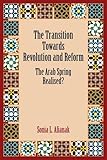The Transition Towards Revolution and Reform : The Arab Spring Realised? / Sonia L. Alianak.
Material type: TextPublisher: Edinburgh : Edinburgh University Press, [2022]Copyright date: ©2014Description: 1 online resource (224 p.) : 1 B/W line artContent type:
TextPublisher: Edinburgh : Edinburgh University Press, [2022]Copyright date: ©2014Description: 1 online resource (224 p.) : 1 B/W line artContent type: - 9780748692712
- 9780748692729
- 909/.097492708312 23
- JQ1850.A91 A44 2014
- JQ1850.A91 A44 2014
- online - DeGruyter
- Issued also in print.
| Item type | Current library | Call number | URL | Status | Notes | Barcode | |
|---|---|---|---|---|---|---|---|
 eBook
eBook
|
Biblioteca "Angelicum" Pont. Univ. S.Tommaso d'Aquino Nuvola online | online - DeGruyter (Browse shelf(Opens below)) | Online access | Not for loan (Accesso limitato) | Accesso per gli utenti autorizzati / Access for authorized users | (dgr)9780748692729 |
restricted access online access with authorization star
http://purl.org/coar/access_right/c_16ec
Why do some Arab Spring uprisings led to reforms and others to revolutions?The Arab Spring created attempts to transition toward democracy by the peoples of Tunisia, Egypt, Morocco and Jordan. This study compares the methods used by the secular leaders of Tunisia and Egypt to deal with people power demanding revolution with the methods that the monarchs of Morocco and Jordan resorted to in accommodating their people's priority of reform. In contrast with the monarchs, the secular leaders avoided resorting to the palliative of religion to ensure the stability of their rule and were, as a result, unable to survive. After the Arab Spring, moderate Islamist parties were, at first, elected to lead the populace out of economic deprivation and corruption. But were the ideals of the Arab Spring realised? This study evaluates the relative success of the move to democracy in these four Middle Eastern countries. Key FeaturesUses four case studies: Tunisia, Egypt, Morocco and JordanExplores the differences between revolution in republics and reform in monarchies in the Arab world following the Arab SpringExplains the reforms in Morocco and Jordan in an innovative way that shows how the leaders used religion to surviveTakes a creative approach to analysing revolutions in Tunisia and Egypt, which can also be applied to other revolutions in the Middle East Helps you to understand the trends in the electoral victories of moderate Islamist parties in the transition toward democracy following the Arab Spring
Issued also in print.
Mode of access: Internet via World Wide Web.
In English.
Description based on online resource; title from PDF title page (publisher's Web site, viewed 24. Mai 2022)


